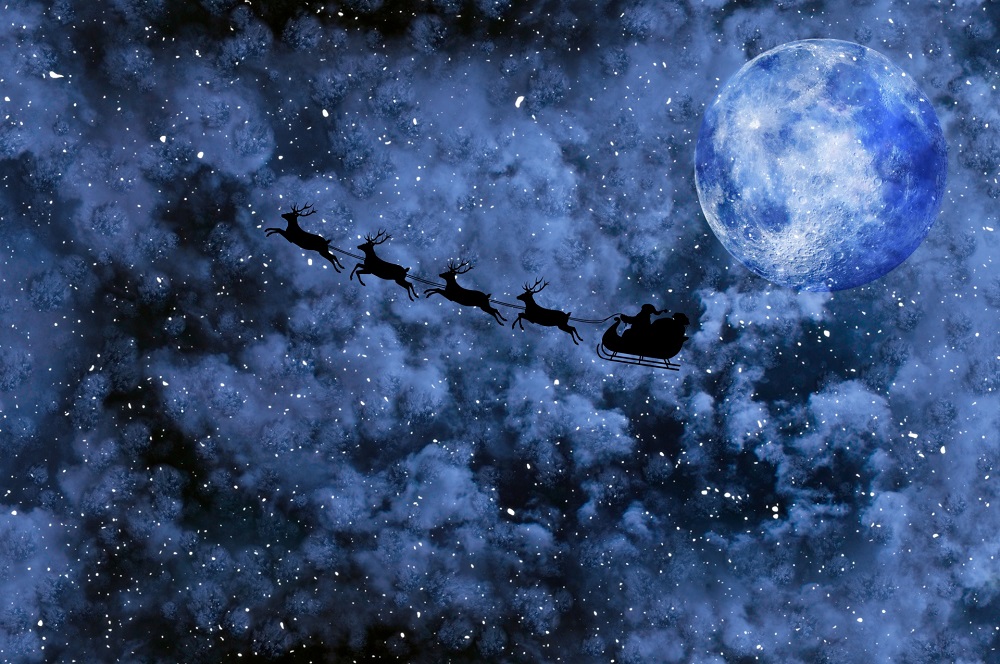
Venus continues to emerge into the evening sky this month. Look low in the southwest at dusk for the brightest thing there.
Saturn is also in the southwestern evening sky. Watch Venus approach and pass it on December 11.
Mars is higher in the morning sky each day this month. Look low in the east at dawn.
Jupiter is behind the Sun and out of sight this month. Jupiter is at conjunction (directly behind the Sun) on December 27.

In December, the Big Dipper is below the horizon at dusk. As the Big Dipper sets, though, Cassiopeia is high above the North Star. This is a pattern of five stars in a distinct M or W shape. (M shape on December evenings, when it is above the North Star). Look for Cassiopeia high in the north on fall and winter evenings.
The Summer Triangle sets in the west. Watch for the Great Square of Pegasus almost overhead at dusk now and in the west by Christmas. Taurus, the Bull rises in the east. Look for the Pleiades star cluster above reddish Aldebaran. Dazzling Orion, the Hunter rises shortly after dusk (by month’s end, it is already up at dusk). As Orion enters the evening sky, we transition from the relatively dim evening skies of autumn to the brilliant stars of winter. We are beginning to face away from the center of the galaxy, looking at stars behind us in our own part (the Orion Spur) of our galaxy.
Moon Phases in December 2019:
1st Quarter Dec. 4, 12:56 a.m.
Full Dec. 11, 11:12 p.m.
Last Quarter Dec. 18, 10:57 p.m.
New Dec. 25, 11:13 p.m.

At 10:19 pm on Saturday, December 21, the Sun is overhead as seen from the tropic of Capricorn, the farthest point south where this is possible. That’s because Earth’s North Pole is now tilted as far as possible away from the Sun. That’s why this is our winter solstice, the day when we have more night and less daylight than any other. Below the equator, this is the summer solstice because the South Pole is tilted towards the Sun as much as possible.
You will notice, however, that sunset on New Year’s Eve is up to ten minutes later than on December 1. Why, if the 31st is closer to the solstice? Although the shortest day (least daylight) occurs on December 21, the earliest sunset occurs for us about December 1. This is because the Sun’s apparent positon in our sky varies like a sine wave; there is little difference in the Sun’s apparent height for about a month before and after the solstice. Due to Earth’s tilt, the Sun does indeed take a shorter, lower path across the sky on December 21 than on December 1, but only by about 1.5 degrees (your pinky at arm’s length blocks one degree). Meanwhile, Earth is slightly accelerating as it approaches perihelion just after the new year. This makes both sunrise and sunset happen a little earlier each night during December. Near the solstice, this small effect can dominate. Since most of us sleep through sunrise and watch sunset, days seem to lengthen from December 1-21 when they are in fact still getting shorter.
Clear Skies!

